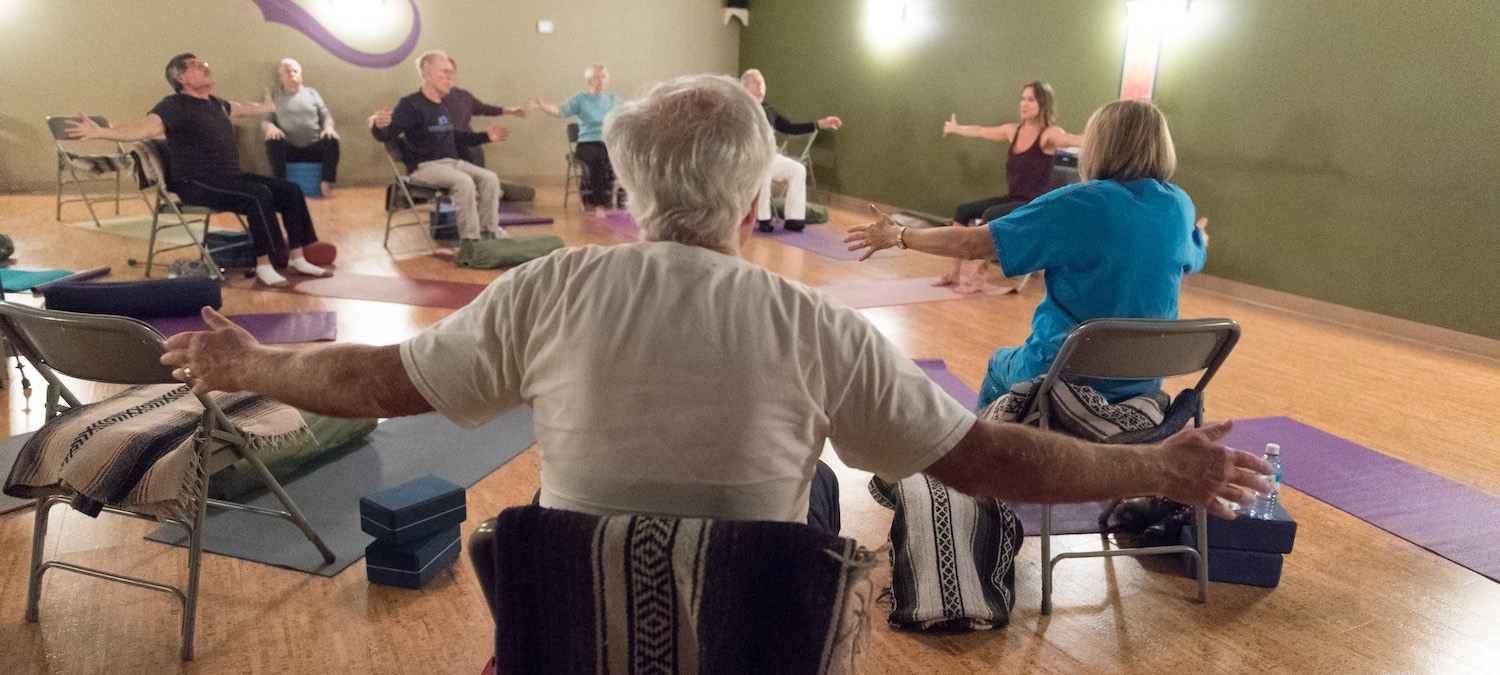
A Colorado State University doctoral student has merged occupational therapy with yoga to help those with Parkinson’s disease reduce their risk of falling.
A 2014 study, called “Merging Yoga and OT,” conducted by Associate Professor Arlene Schmid of CSU’s Department of Occupational Therapy and colleagues, showed promising results for reducing fall risk among those who have experienced a stroke. Now Ph.D. student Laura Swink and her faculty advisor Schmid are beginning to see similar results in individuals with Parkinson’s disease.
Last fall, Swink began adding an OT component to an existing yoga class for individuals with Parkinson’s led by certified yoga teacher Jennifer Atkins at the Raintree Athletic Club in Fort Collins. Swink first analyzed participants during eight weeks with yoga alone, then for another eight weeks with biweekly OT sessions added.
Tracking improvements
For the study, Swink did an initial intake assessment of the participants to measure their balance and survey them about issues like fear of falling and confidence in their balance. She conducted the same assessments at the end of the intervention and is now analyzing the results for any improvements. Her preliminary findings show that participants reported a 40 percent decrease in the number of falls during the intervention (yoga and OT), compared to the control (yoga only) period.
Classes ongoing
The CSU study on yoga and OT for those with Parkinson’s was funded with a $1,500 “Small Student Grant” from LSVT Global, and the space for the OT sessions was donated by the Raintree Athletic Club. Although the OT sessions are now complete, anyone who is interested can still participate in ongoing adaptive yoga classes. Visit www.jayantiyoga.com for more information.
Thanks to support from the Parkinson’s Association of the Rockies, the Monday “Yoga Basics for Parkinson’s” class is now free of charge.
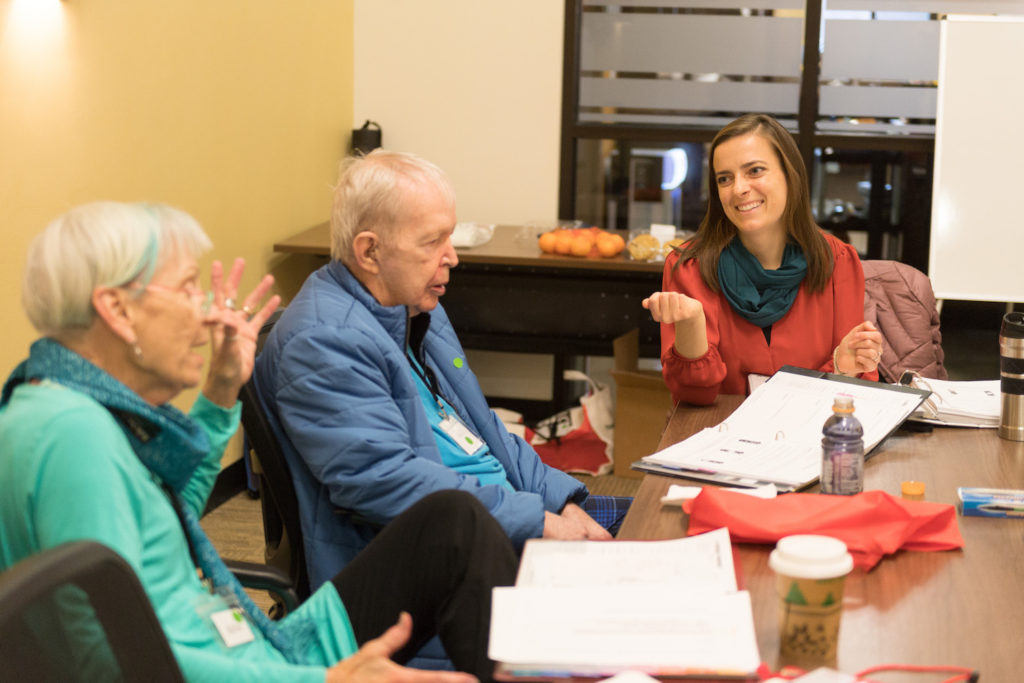
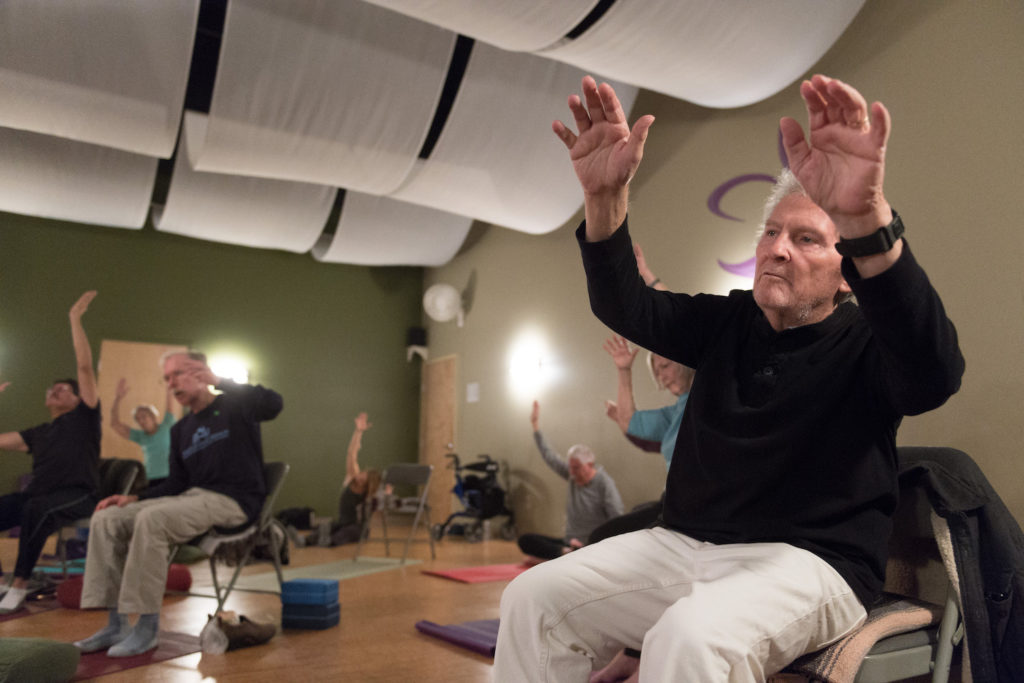
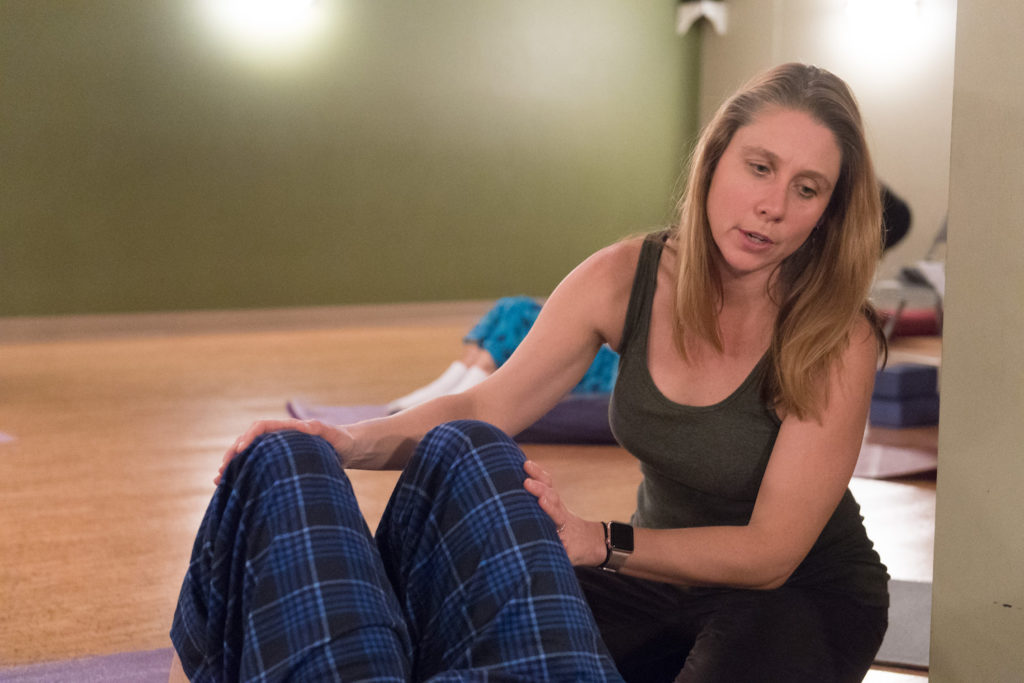
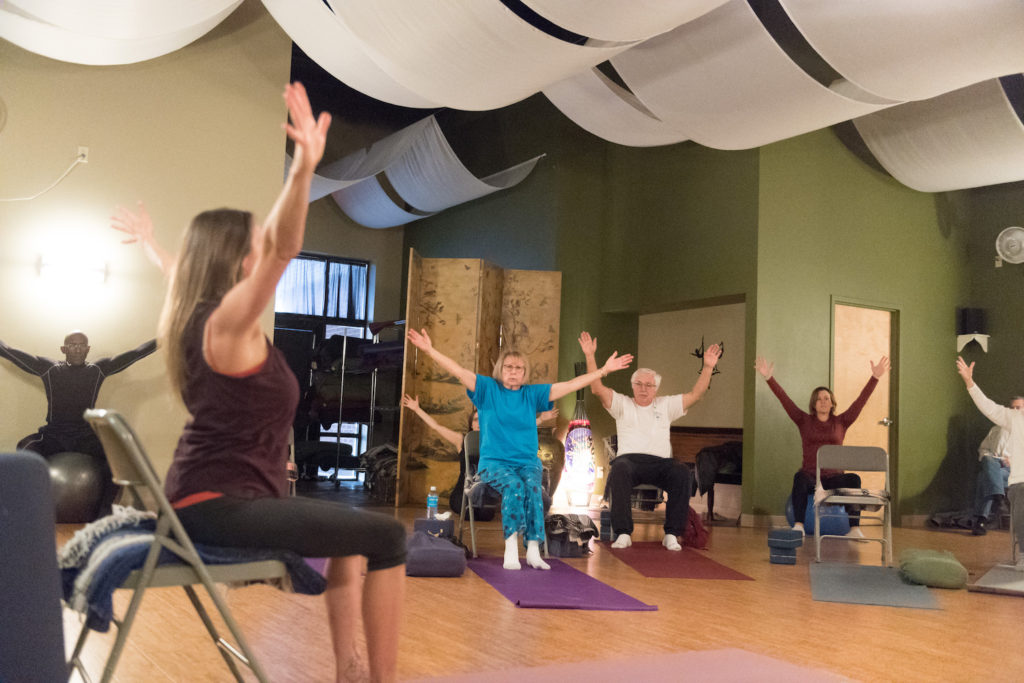
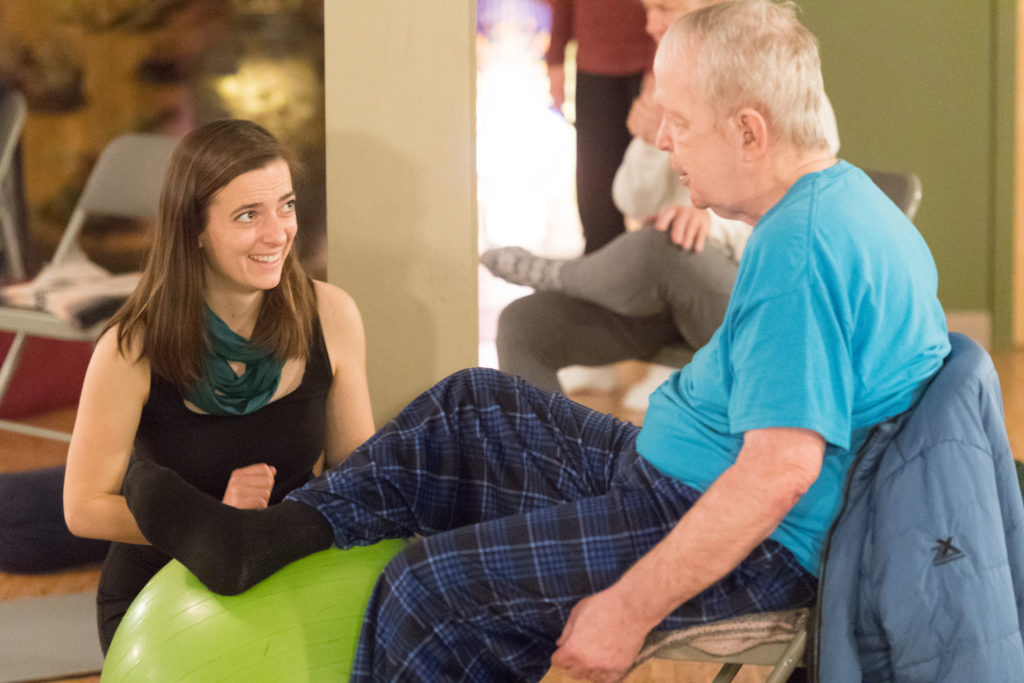
Photos by Bill Cotton/CSU
OT components that Swink introduced include lectures and group discussions about reducing fall risk, as well as handouts and videos of safe and unsafe home environments. She also introduced gentle exercise and assisted in the yoga sessions, helping participants with stretches, positions, or just getting onto the floor.
During her OT sessions, Swink reviewed environmental, biological, behavioral, and socioeconomic tips, from removing clutter at home that could be a tripping hazard to avoiding the temptation to multi-task.
The research is the focus of Swink’s dissertation, which she plans to defend next summer. She earned her master’s degree in OT at Ithaca College before attending CSU.
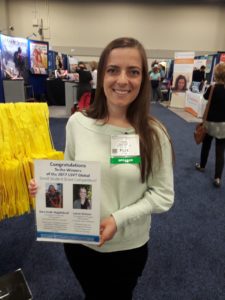
Benefits to participants
Participants agreed that the addition of OT to the yoga sessions was beneficial.
Mary Rogers, who was diagnosed with Parkinson’s after having knee surgery nine years ago, said the yoga has helped her regain the ability to kneel and cross her legs again. And thanks to the OT lessons, she’s made her stairs safer with railings and removed large house plants that were always in her way.
“I was glad to get rid of them; I can’t believe how much easier it is to get around,” Rogers said. “I used to feel sorry for myself, but my attitude is much better. I can do anything I put my mind to.”
Wendell Hamilton, a 75-year-old Fort Collins resident who was diagnosed with Parkinson’s a few years ago, never thought he’d have to worry about falling. Then, while trying to carry a cup of coffee down some stairs, “I saw the cement coming straight for me. It was only three steps, but it messed me up bad. I thought running around in your socks was a safe thing, but you can slip.”
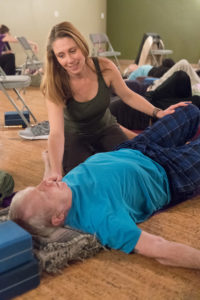
‘I’m so thankful’
He says the OT portion of the yoga class taught him that even throw rugs can be hazards, and that it’s OK to use the garage door to avoid the front steps. Hamilton said he’s also learned the safe way to get in a car — and off the couch.
“I’m so thankful for the course and how well it was taught,” he said. “That course was worth a million bucks.”
Another participant, Billie Pawlikowski, said her first year living with Parkinson’s was spent sitting, watching movies and reading books, and she began to have trouble getting out of her chair.
“We start with no hope, with the doctor saying it’s a progressive, neurological disease that won’t get better,” she explained. “But it’s like being an Olympic athlete; you have to do the hard work. If you just sit down and give up, you’re gone. Not exercising puts you in a wheelchair or flat on your back.”
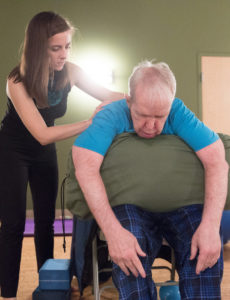
In addition to motivating her to get railings and grab bars installed along walls in the lower level of her home, Pawlikowski said the OT sessions provided participants with much-needed socializing.
“Somehow we feed off each other’s energy,” she said. “Some of us can speak well, others can’t. Some don’t move quickly, but we become an organism, and we’re all parts of it.”
Related study
Schmid and her team are launching a related study this spring, one intended to see if the combination of light exercise and group education has a positive effect in situations where individuals and their primary caregiver both suffer from chronic pain. That study, which involves Professor Christine Fruhauf in CSU’s Department of Human Development and Family Studies, will enroll about 60 people — 30 pairs of people with pain.
Everyone who participates in the study will receive eight weeks of light exercise and education thought to improve both pain and the relationship between the individuals. Those interested in participating can email MY-exerciseANDeducation@colostate.edu or call 970-491-5793, ext. 6, and leave a message for Laura Grimm.
Schmid recently released a new book that details her previous study on yoga, OT, and stroke. Yoga Therapy for Stroke: A Handbook for Yoga Therapists and Health Care Professionals, co-authored with Marieke Van Puymbroeck, was published by Singing Dragon last fall.
The Department of Occupational Therapy is based in CSU’s College of Health and Human Sciences.